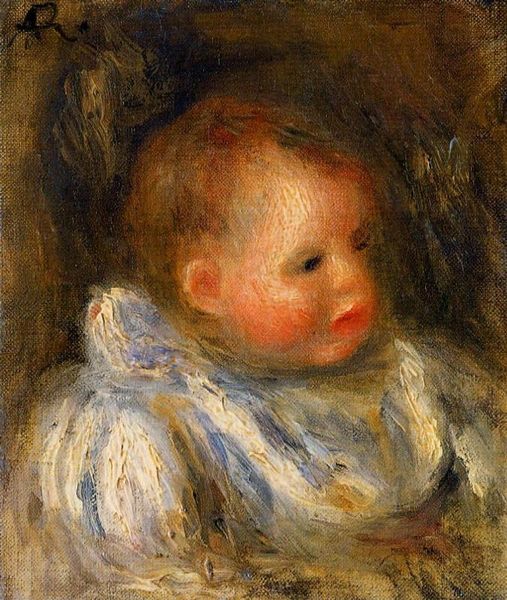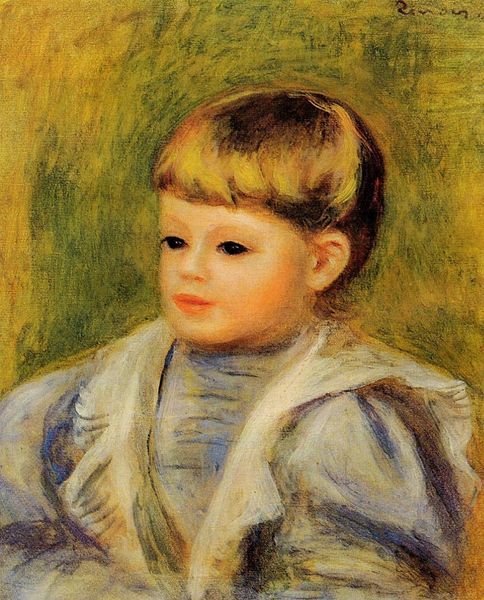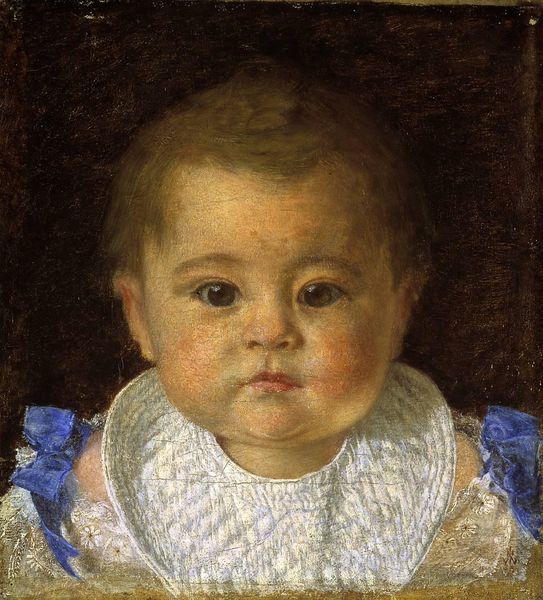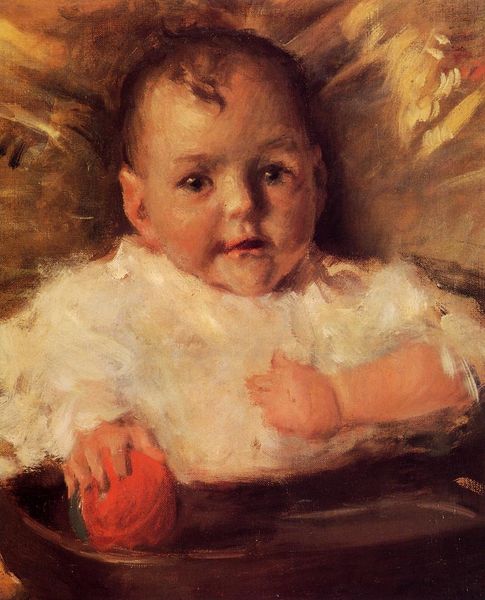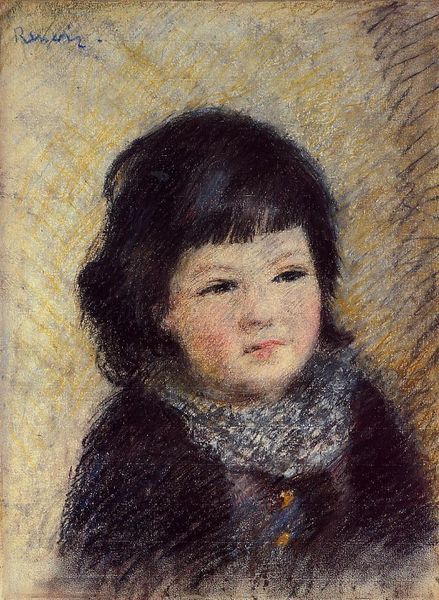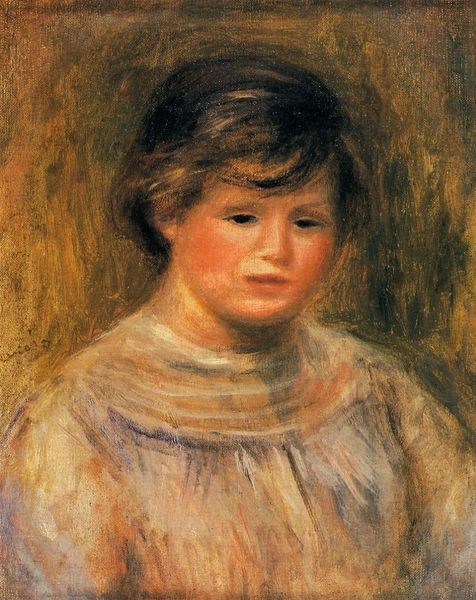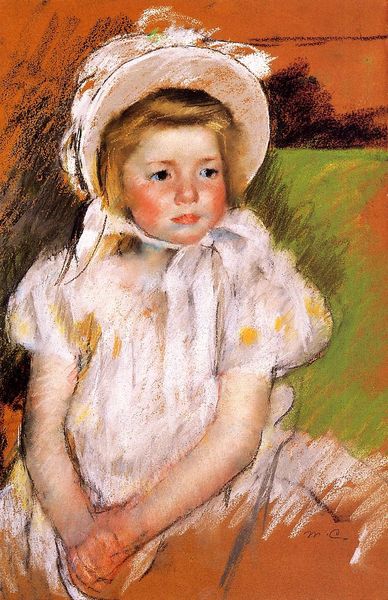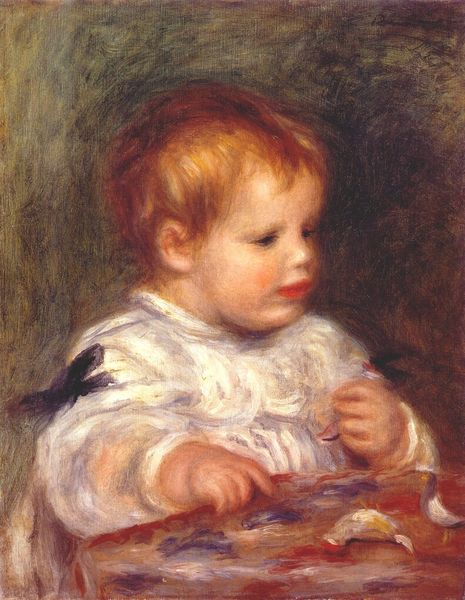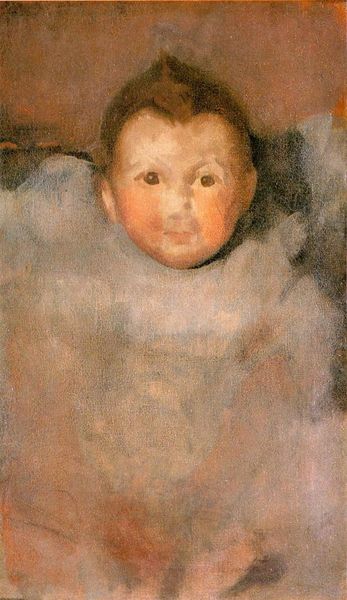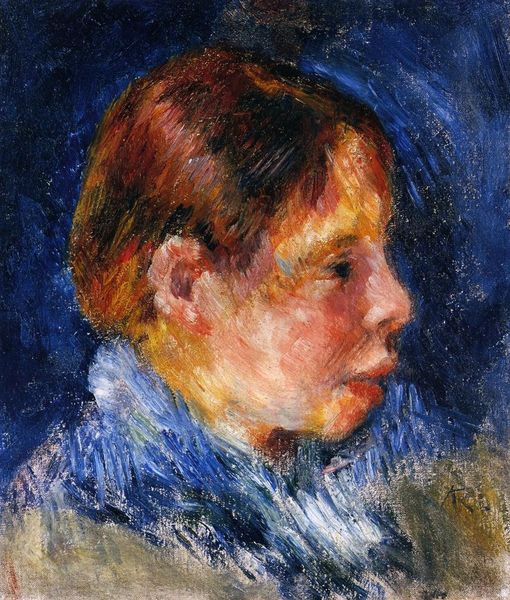
oil-paint, impasto
#
portrait
#
impressionism
#
oil-paint
#
oil painting
#
impasto
#
child
#
line
Copyright: Public domain
Curator: Here we have Paul Gauguin's "Portrait of a child (Aline Gauguin)", painted around 1877. Editor: It’s an intimate portrayal. There is an arresting vulnerability in the child’s gaze. It seems to be holding onto the old in the very beginning. Curator: Notice the handling of the paint, the impasto technique especially around the edges of the cap. The brushstrokes are quick, dabbed, and scumbled, which speaks to an Impressionistic concern with capturing a fleeting moment, but it falls outside Impressionism precisely. Editor: Precisely, and what of the bonnet? White connotes innocence but can suggest social station, swaddling the child, as if buffering against something unknown. Babies in portraits frequently hold some cultural signification. This infant is, notably, unnamed. Curator: Interesting that you notice that tension. Look again at the brushstrokes describing the child’s face—it suggests form through color rather than outline. And the chromatic relationships are remarkable! What might the white convey on the semiotic plane? The child looks away from us, defying our sight, lost already, perhaps, but with eyes so stark it cuts away the sweetness that attends infancy. Editor: Infant portraiture itself serves a function beyond mere family documentation. It acts as a charm against misfortune, the death of a child so ever-present at that moment in history. The bonnet functions almost like a halo here. The artist memorializing an angelic figure against an unseen force. But do you notice how quickly the portrait thins out across the planes and negative space? How little context we actually possess? Curator: Yes, and this highlights what is there: form emerging through a series of strategic brushstrokes in ways typical for Impressionism; however, in Gauguin, such application anticipates Expressionism. Editor: This piece speaks profoundly to the protective instincts triggered by innocence, amplified in times when infant mortality loomed large in the social consciousness. That deep sadness can speak directly to how our minds interpret art and meaning. Curator: Quite so. The very tension in these chromatic variations suggests that. Editor: Thank you. Such paintings can almost act as a social mirror. Curator: I agree. An invitation, too, to look into the soul.
Comments
No comments
Be the first to comment and join the conversation on the ultimate creative platform.
